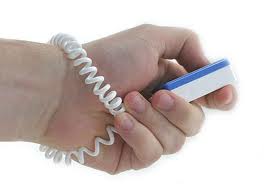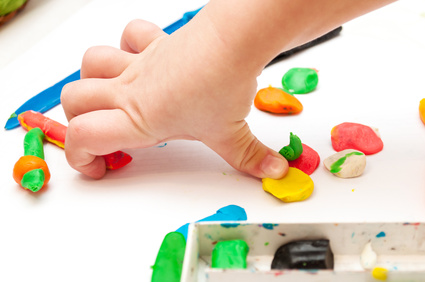Dressing, eating, playing, writing.
Like everyone else, our kids with autism need to develop these skills.
How can you help your child increase the strength and dexterity of her hands and fingers?
Fine motor exercises will do the job, but sometimes it’s difficult for our kids with autism to do them. Here is an expert article on fine motor skills and some practical suggestions for doing them with kids with autism.
8 Activities to Help Young Children Develop Fine Motor Skills
This article by Erica Patino, of the National Center for Learning Disabilities, has proven ideas for hands-on activities to increase fine motor skills. While some of our kids with autism may be able to do these activities, others may not due to sensory or attention issues. Let’s see how to tackle these problems with the always useful and flexible TAGteach approach.
Start with just one or two activities
On a table, set out the materials for the child, perhaps just one or two items so she is not overwhelmed (also make sure these toys are the only activities available, so she won’t be distracted by other objects). Let’s say we start with play-dough and strings. While the ultimate goal is for her to interact appropriately with these substances and do things like pick up, squeeze and handle these items, it may be better to start out with some intermediate goals like introducing the materials and building up tolerance to the substances.
First set of tag points — to introduce materials
For the purposes of this discussion, let’s say the child is one who has some sensory issues and perhaps some difficulties with structured play activities. Due to the fact that many of our kids may not like these substances because of their smell or texture, the first goal would be to introduce these items to the child with no requirements that she actually touch them or play with them. Tag points could be:
Looks at play-dough
Looks at strings
Walks near play-dough
Walks near strings
Stands near play-dough
Stands near strings
When she performs any one of these actions, the instructor would tag and treat (i.e., mark the behavior with the tagger and hand over a reinforcer. Do this for a number of short sessions, and when she is comfortable looking at these objects, start on a new set of goals.
Second set of tag points — to encourage interaction with materials
For this intermediate step we would like the child to spend time at the table, perhaps even touching these items. Tag points could be:
Stands near table
Swings hand near items
Sniffs items
Touches items
Pokes items
For each of these actions, the instructor would tag and treat, thus reinforcing these desired behaviors. Practice these actions for a number of short sessions until she can perform them comfortably.
Third set of tag points — to encourage play with materials
The next step would be to encourage actual handling and play with these items. Tag points could be:
Stands near table
Pokes items
Picks up items
Moves items around on table
At this point, the instructor can start tagging any play movements or grasping movements that the child performs. She might actually squeeze the play-dough or drape one string over another one. Careful tagging of the squeezing and grasping actions will result in the child performing these fine motor movements more often.
This approach allows her to get used to the different smells and textures of these items, and develop fine motor skills at her own pace. When she is comfortable, the parent or instructor can model some play actions, like rolling the play-dough or winding string around a peg, and tag her for any approximations of these actions. With patience and persistence, she can learn to enjoy fine motor activities with a variety of substances.
Expand the fine motor activities to real life objects
As her skills develop, slowly introduce clothing items, cutlery items, and pencils and crayons to the fine motor play table. Demonstrate pulling zippers up and down, buttoning and unbuttoning a shirt (with easy buttons!), and picking up pencils and forks. Set tag points that the child can accomplish, and build up from there. At this point, she may be able to play games, put clothes on a teddy bear or feed a doll.
With time and practice, this child will be able to dress herself, use cutlery, and draw with pencils and crayons, plus she will enjoy it! She will have the skills she needs for self-care and future learning.
What is TAGteach?
TAGteach stands for Teaching with Acoustical Guidance. TAGteach is a teaching and communication method based on the scientific principles of Applied Behavior Analysis (ABA).
TAGteach enables extremely precise positive reinforcement of behavior by using an acoustical signal to “mark” the behavior – at the precise moment the child performs the behavior! The acoustical signal is a short, sharp sound made by a handheld device (the “tagger”). When the child performs the correct action, the parent/instructor immediately presses the button on the tagger and hands over a treat (candy, treat, token, praise, social recognition, or money) as a reinforcer.
With TAGteach, it is easy to reinforce behaviors precisely and quickly. The immediate, accurate feedback and positive reinforcement result in the child performing the correct action more often, and for longer periods of time. With immediate feedback and learning tasks broken down into small steps, children can learn many new skills with TAGteach — at their own pace.
 For more information see www.tagteach.com.
For more information see www.tagteach.com.
Join the free TAGteach listserve.
TAGteach taggers are available here.
See Martha’s book about TAGteach for Autism or feel free to ask a question (with no obligation).
Sign up for my mailing list to receive updates, new articles and free tips right in your inbox!

